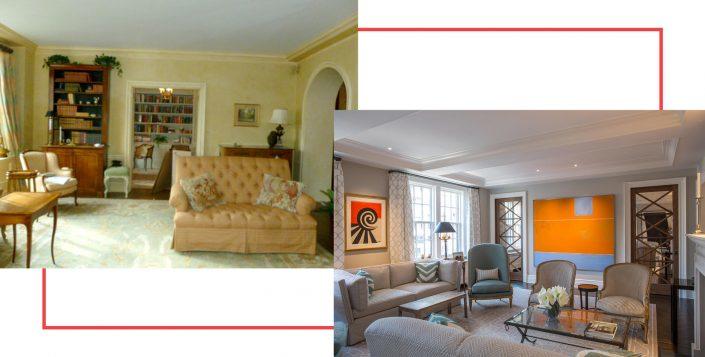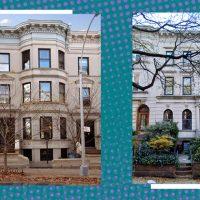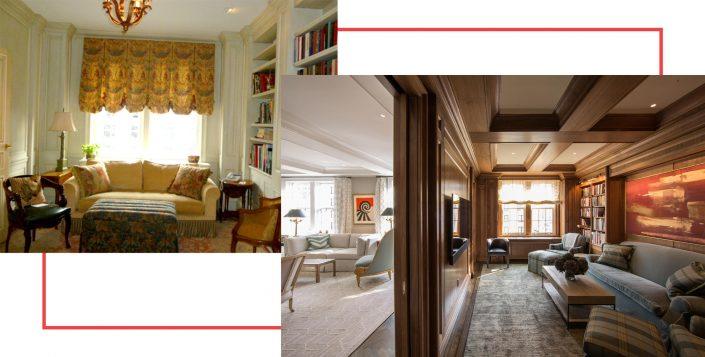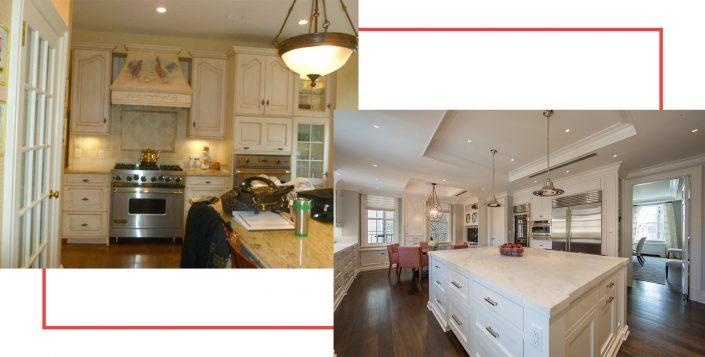Of the 2,072 single-family Manhattan residences built before 1920, nearly half have never been renovated. Those homes present some challenges for the folks tasked with selling them — but often surprises as well.
Brokers might find herringbone flooring beneath wall-to-wall carpeting, a marble mantle behind a coat of paint or antique mirror doors hidden away.
“That’s one of the thrills,” said Cathy Franklin, a broker for Corcoran.
Those involved in selling large properties owned by a single family say a key is making the most of unexpected discoveries.

Before and after images of a living room from The Renovated Home
Lee Stahl, president of renovation firm The Renovated Home, has torn down a wall to find high ceilings and natural light waiting to pour into the room. The same apartment had a kitchen that consisted of four separate rooms, including a butler’s pantry and breakfast room. Combining them, he created a single livable kitchen.

Lee Stahl, The Renovated Home
In another apartment, Stahl removed carpeting that seemed tacked down with Elmers Glue to find handmade mosaic tile, which he estimates would cost a minimum of $100,000.
“Seventy years ago, the way people got personality and got design elements into a space was through wallpaper and through furniture,” Stahl said. “Now people want less furniture, less clutter.”
Vintage wine, historic coins and periodicals from the 1920s are among the treasures he has uncovered from in between walls where they were once hoarded away.
“When people are doing things in these homes, whether they hide things in the walls or ceiling, they’re not anticipating dying,” Stahl said. “And then they die.”
Those finds are always returned to the owners of the estate, Stahl noted.
Read more



Renovations are no longer just refinishing the floors and throwing on a coat of paint. Often it’s tearing down walls to create the open layouts popular with today’s buyers. But Christine Martin, a broker with Compass, says pre-war buildings surprisingly lend themselves to modern living.
Small staff rooms can be converted to home offices and tearing down walls can allow for huge rooms to easily flow into each other.

Before and after images of a library from The Renovated Home
Homes’ exteriors may be tightly regulated by the Landmarks Preservation Commission, but generally anything and everything inside can and is done to an estate. Still, some argue that preservation is key.
“Everything is changing every year with cable and smart wiring and Sonos, but estates are wonderful when they’re less touched,” Corcoran’s Franklin said. “They still have the beautiful hardware and the beautiful moldings and details.”
Franklin’s perspective comes in part from her art history degree. As she walks through estates that she has sold, she names their architects, for example Stanford White, who designed 9-11 54th Street in 1896, or Rosario Candela, whose 740 Park was constructed in 1929.

Before and after images of a kitchen from The Renovated Home
Even estate buyers who appreciate history, though, typically want to live in a pristine home. “The standard against which apartments are measured is a mint-condition apartment,” said Martin.
The pandemic has complicated renovations. However, as many affluent New Yorkers work remotely and live away from the city, some agents say buyers may be drawn to estates.
“The home has become more important than ever and will be more important than ever,” Lauren Muss, an agent with Douglas Elliman, said.
